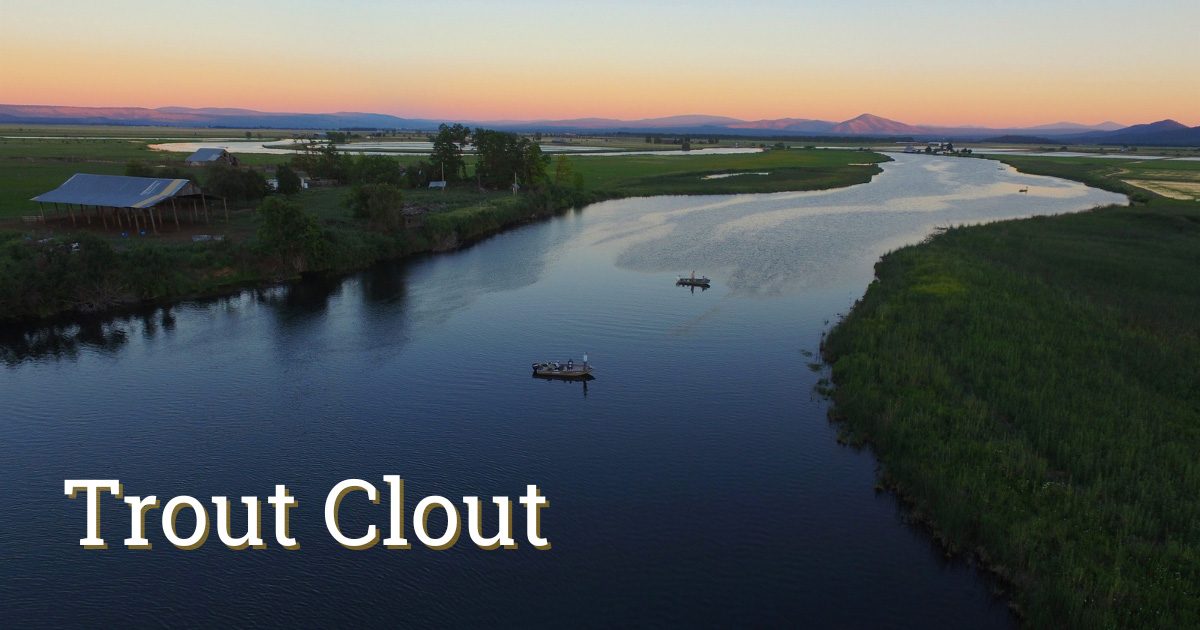CalTrout and the Fall River Conservancy recently secured a major legal victory for our native trout. The Fall River will now be treated as a single regulated entity for catch and release angling with barbless artificial lures, open all year. This builds upon CalTrout’s history of conservation on the Fall River, which started in our founding year of 1971.
What changed?
Previously, the Fall River had different regulations for its tributaries. These new regulations treat the Fall River complex as a single unified system with the same regulations across all water, including Bear Creek, a major spawning tributary. Regulations previously applied during a set time period, approximately Memorial Day to September 30. Now, catch and release angling will be open all year. How anglers can fish also changed with the new regulations mandating artificial lures with barbless hooks be used to protect this important wild trout fishery. Previously, anglers were allowed to catch and take home two trout, but these new regulations reduce that number to zero, meaning all angling will be catch and release.
Why does this matter for fish?
CalTrout and UC Davis have spent decades studying the populations and genetics of Fall River fish in partnership with California Department of Fish and Wildlife (CDFW). The data collected on this fishery showed that fish move throughout the various springs, tributaries, and ponds of the Fall River complex throughout the year, necessitating a single regulation across all areas. This research allowed us to give informed advice to CDFW on their new fishing regulations that will better protect wild and native trout.
How will this affect angling on the Fall River?
The regulatory changes we won are based on years of scientific study. These changes reflect the protections we need on the Fall River to ensure that these wild fish remain healthy and thriving, while providing catch and release access for recreational anglers. This change will ensure that the blue-ribbon wild trout fishery in the Fall River will be protected into the future.






4 Comments
It sounds like a positive change for Fall River trout. However, one question I have is whether or not the new regulations will require artificial lures to have single barbless hooks as opposed to treble hooks. I’m concerned that the continued use of treble hooks (even if barbless) will result in increased mortality of released trout.
I commend CalTrout in getting the ill advised and potentially disastrous proposed regulations changed.
Half a loaf is better than none I guess. I vehemently disagree with allowing fishing on the spawning tributaries Bear and Spring Creek during spawning season.
I have fished this system for 50 years now.
Even if it is zero take there is no reason to bother spawning native rainbows on their reds!!!! What are the regulators thinking???
This will only encourage poaching and illegal taking of large breeding natives.
Only seen a warden in upper fall river once on 50 years!!!!
Cannot imagine this will change.
Previously all fishing during spawning season was prohibited.
Fall River should be declared a Blue Ribbon fishery with special regulations just like Pit and McCloud.
New regulations will require single barbless hooks, no trebles!
David. Thank you for your question! I am
Newcomer to the Fall River – only 19 years – and the use of treble hooks always seemed to be incongruous with this wild trout fishery.
Cheers. Trevor